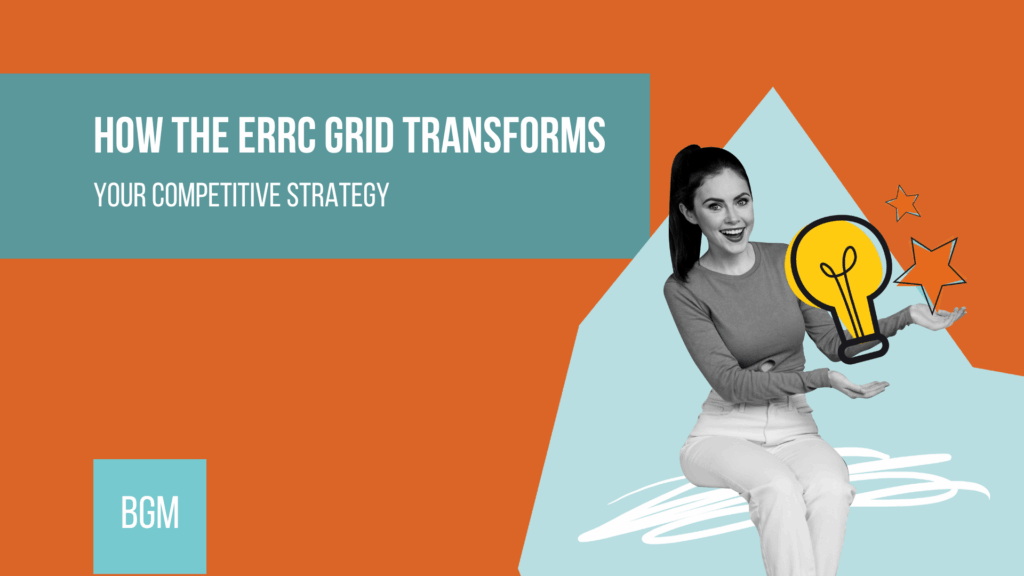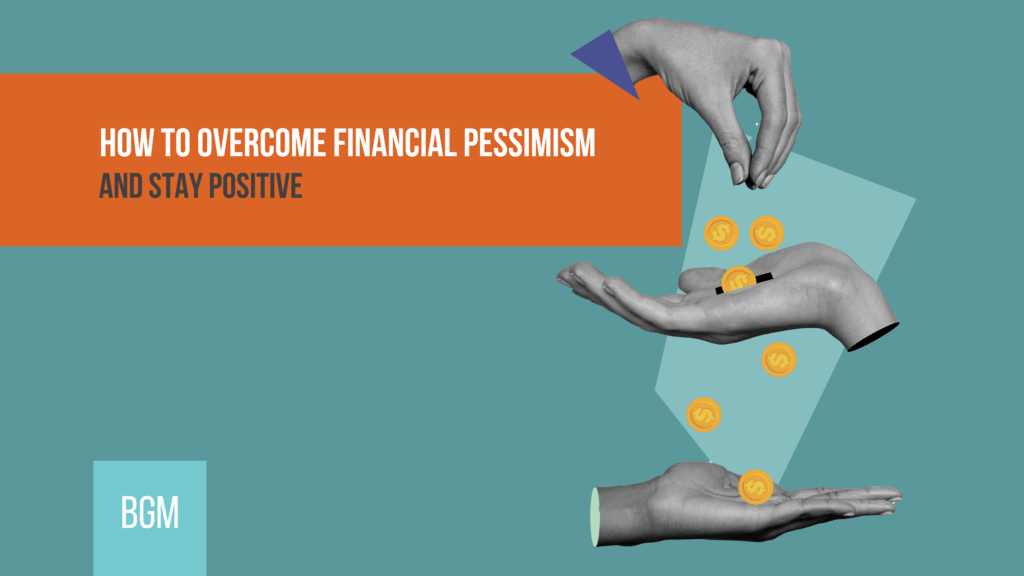Traditional competitive strategy focuses on doing what competitors do, only better. Companies invest enormous resources trying to outperform rivals on established industry factors such as better features, lower prices, superior service, or more convenient locations. This approach leads to incremental improvements within existing market boundaries, often resulting in fierce competition and eroding profit margins.
In this newsletter, we’ll learn how the ERRC Grid offers a fundamentally different approach by challenging you to reconstruct your value proposition systematically. We’ll explore how to eliminate costly factors, reduce over-served elements, raise under-served factors to new levels, and create entirely new sources of value that competitors haven’t considered.
How Does The ERRC Grid Transform Competitive Strategy
The ERRC Grid is built on the premise that most industries operate according to unexamined assumptions about what customers value and what factors are necessary for competition. These assumptions become so entrenched that companies rarely question them, instead focusing on incremental improvements within accepted boundaries.
Breaking Industry Logic
Every industry develops its own logic about what factors matter most for success. Airlines compete on routes, schedules, and frequent flyer programmes. Hotels compete on location, amenities, and service levels. Restaurants compete on cuisine quality, atmosphere, and price points.
The ERRC Grid forces systematic examination of these assumptions. Which factors does your industry treat as essential that might actually add little customer value? Which factors receive insufficient attention despite being important to customers? What new factors could create value that no one in your industry currently provides?
This questioning process often reveals that industries collectively over-invest in certain areas whilst neglecting others that matter more to customers. Companies that identify and act on these insights can achieve significant competitive advantages.
Creating Strategic Focus
Traditional competitive analysis can lead to feature creep, where companies try to match competitors on every dimension whilst also differentiating themselves. This approach often results in complex, expensive offerings that don’t clearly excel in any particular area.
The ERRC Grid creates focus by forcing trade-offs. When you eliminate certain factors, you free resources to invest in raising or developing others. This focused approach enables breakthrough performance in selected areas rather than mediocre performance across all dimensions.
The Four Strategic Actions
Each element of the ERRC Grid serves a specific purpose in reshaping your competitive position and creating new value propositions.
Eliminate – Remove Factors That Add Cost But Little Value
Most industries have factors that companies compete on despite providing minimal value to customers. These factors persist because they’ve always existed, not because customers actually care about them.
Eliminating these factors can dramatically reduce costs whilst having little impact on customer satisfaction. The key is distinguishing between factors that customers expect and factors they actually value when making purchasing decisions.
Budget airlines eliminated elaborate meal service, allowing them to offer dramatically lower prices without significantly reducing customer satisfaction for most travellers.
Reduce – Scale Back Over-Served Factors
Many industries over-deliver on certain factors beyond what most customers need or are willing to pay for. Identifying these over-served areas allows companies to reduce costs whilst maintaining a competitive position.
This doesn’t mean providing poor quality, but rather right-sizing investment to match genuine customer needs. The savings can then be redirected toward factors that create more value.
Raise – Enhance Under-Served Factors
Most industries have factors that matter to customers but receive insufficient attention from competitors. Raising performance on these factors can create significant differentiation whilst often requiring relatively modest investment.
The key is identifying factors where the industry standard falls short of what customers actually want. This might be speed, convenience, personalisation, or reliability-areas where incremental improvement can create disproportionate value.
Create – Introduce New Factors The Market Has Never Seen
The most powerful element of the ERRC Grid involves creating entirely new sources of value that don’t exist in your industry. These new factors can transform customer expectations and create a blue ocean space where competition becomes irrelevant.
Creating new factors requires a deep understanding of customer needs that aren’t currently being addressed by your industry. This often means looking beyond traditional industry boundaries to understand the broader context of customer problems and desires.
Practical Application Of The ERRC Framework
Implementing the ERRC Grid effectively requires systematic analysis and careful consideration of customer needs, industry conventions, and resource allocation.
Customer Research Beyond Industry Boundaries
Understanding what to eliminate, reduce, raise, or create requires research that goes beyond traditional competitive analysis. Instead of just comparing your offering to competitors, examine the entire customer experience and problem-solving context.
What frustrates customers about your industry? What do they wish existed but doesn’t? What aspects of the current offering do they tolerate rather than value? What problems related to your industry do they solve in other ways?
This broader perspective often reveals opportunities that industry-focused analysis misses. Customers might care more about factors that no company in your industry currently provides than about the factors all companies compete on.
Resource Reallocation Analysis
The ERRC Grid isn’t just about strategy-it’s about resource allocation. Eliminating and reducing factors should free resources that can be invested in raising and creating factors. This reallocation is what makes the strategy economically viable.
Calculate the costs associated with factors you might eliminate or reduce. How much do you spend on these activities annually? How would eliminating or reducing them affect your cost structure? How could those resources be better deployed?
Market Testing And Iteration
The ERRC Grid provides a framework for strategic thinking, but implementation requires testing and iteration. Customer reactions to proposed changes might differ from your assumptions, and operational challenges might emerge that weren’t anticipated.
Start with pilot programmes or limited market tests before full implementation. This allows you to refine your approach based on real customer feedback and operational experience.
Deciding What New Factors To Create
The most challenging aspect of the ERRC Grid is determining what new factors to create. This requires understanding unmet customer needs and imagining possibilities that don’t currently exist in your industry.
Look For Customer Workarounds
Pay attention to how customers work around limitations in your industry’s current offerings. What do they do before, during, or after using your product or service? What related problems do they solve through other means?
These workarounds often reveal opportunities for new factors that could eliminate customer friction or provide additional value within your offering.
Cross-Industry Learning
Study how other industries solve similar customer problems or provide related benefits. What approaches from completely different sectors could be adapted to your industry?
This cross-pollination of ideas often generates innovative factors that seem obvious in retrospect but weren’t considered because they didn’t exist in your traditional competitive set.
Outcome-Based Innovation
Focus on the outcomes customers want to achieve rather than the features they request. What job are customers trying to get done, and what new factors could help them achieve better outcomes?
This outcome focus often reveals opportunities for factors that provide value in ways customers haven’t explicitly requested because they didn’t know such solutions were possible.
Implementation Challenges And Solutions
Successfully implementing ERRC strategies requires overcoming several common challenges that can derail even well-conceived strategic transformations.
Internal Resistance
Eliminating or reducing factors often meets resistance from employees who work on those activities or customers accustomed to current offerings. Address resistance through clear communication about strategic rationale and involvement in solution development.
Customer Education
When you create new factors or eliminate expected ones, customers need education about the new value proposition. Invest in marketing that explains not just what’s different, but why those differences provide better value.
Competitive Response
Successful ERRC implementation often provokes competitive responses. Build sustainable competitive advantages through continuous innovation, superior execution, or combinations of factors that are difficult to replicate.
Building Your ERRC Strategy
Developing an effective ERRC strategy requires systematic analysis, creative thinking, and careful implementation planning.
Begin by mapping all factors that companies in your industry currently compete on. Then research customer priorities to understand which factors matter most and least to your target segments. Look for factors that receive disproportionate industry investment relative to customer value, and identify customer needs that no industry player currently addresses well.
Use this analysis to develop elimination and reduction candidates, factors to raise, and potential new factors to create. Test these concepts with customers and stakeholders before full implementation, and plan resource reallocation to make the strategy economically viable.
Remember that successful ERRC implementation creates blue ocean opportunities by changing the basis of competition rather than just competing better on existing factors. This transformation can provide sustainable competitive advantages whilst creating new value for customers.
Thank you for being part of our Business Life community. If this has changed how you think about competitive strategy, share it with someone ready to break free from traditional competitive thinking. If there’s a topic you’d like us to explore in future newsletters, let us know. Let’s keep building strategies that create new possibilities rather than just competing harder.
Live with purpose,
Kristian Livolsi and the Business Growth Mindset Team




